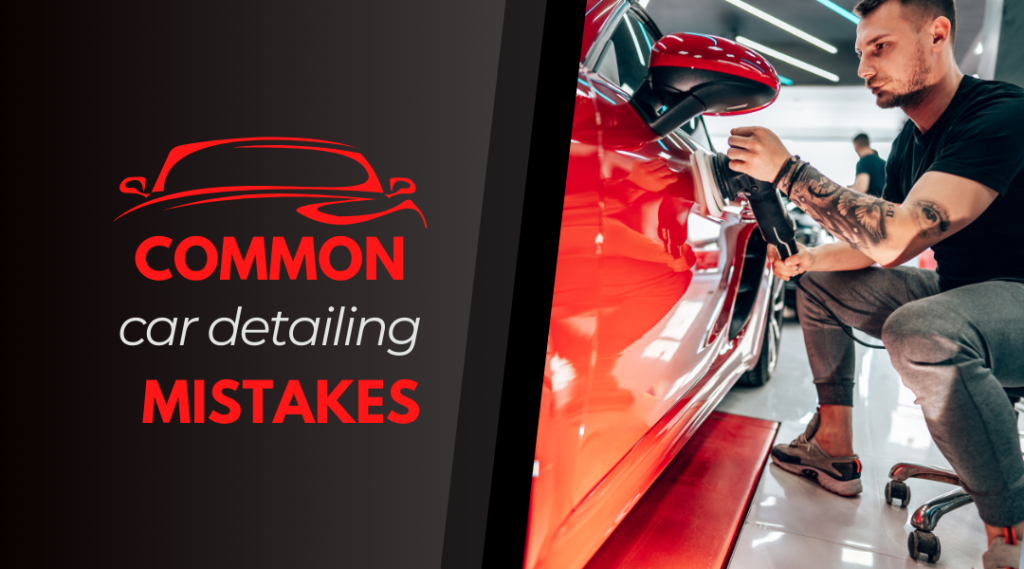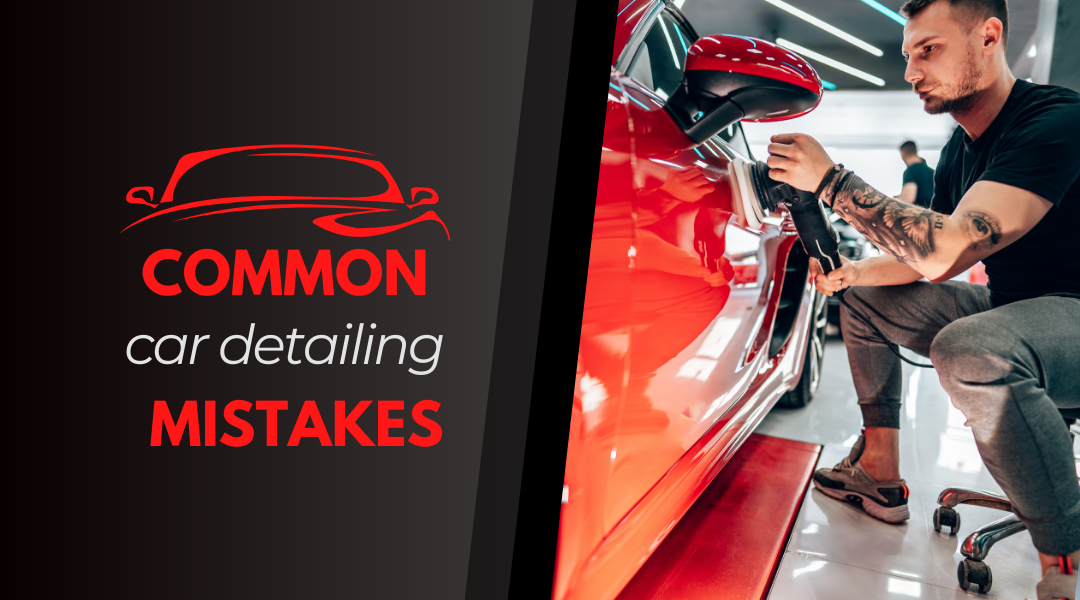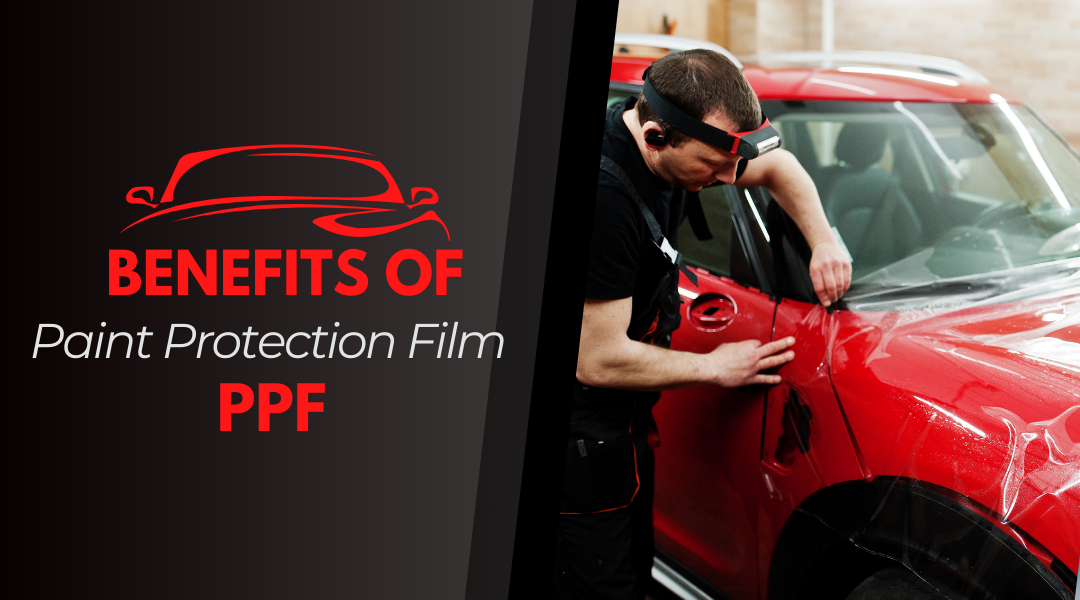Detailing your car is critical because it makes it look good and helps you maximize your resale value. Despite being a common task, most of us make typical mistakes while detailing our cars. This can lead to our car paint getting damaged and having scratches, discoloration, and other forms of damage. For more professional car detailing tips and services, explore Car Detailing Omaha NE, Omaha’s expert detailing service.
This guide will help you identify and prevent the most common car detailing mistakes that car owners make when they wash and clean their vehicles. Apply these tips, and your car will be spic-and-span, and will remain that way for many years.
14 Top Car Detailing Mistakes and Expert Tips to Avoid Them
Using the Wrong Cleaning Products
Household cleaners such as dish soap or glass cleaner are too harsh and can strip off the wax layers that protect paintwork and other surfaces. Dish soap dulls the paint, and ammonia-based glass cleaner can damage tinted glass.
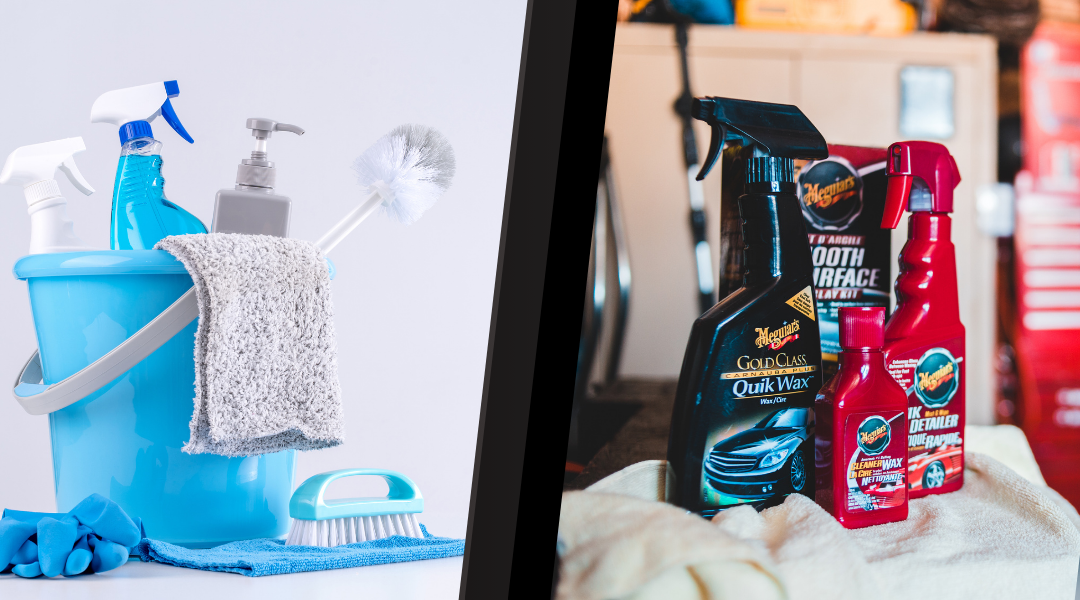
How to avoid this? Only use something designed for use in your home. Avoid household cleaners, detergents, soaps, and glass cleaners on your car at all costs.
Why not? A household glass cleaner is often highly acidic and can strip paint from your vehicle. All you need is a pH-balanced car wash soap for the exterior and an automotive glass cleaner for the windows. Read the packaging carefully and follow the manufacturer’s directions for the best results.
Skipping the Pre-Wash
One of the most common mistakes I see is that people skip pre-washing. This is a recipe for scratching. The idea behind the pre-wash is to remove all of the loose dirt and debris that would otherwise be caught in the wash mitt and scratch the paint.
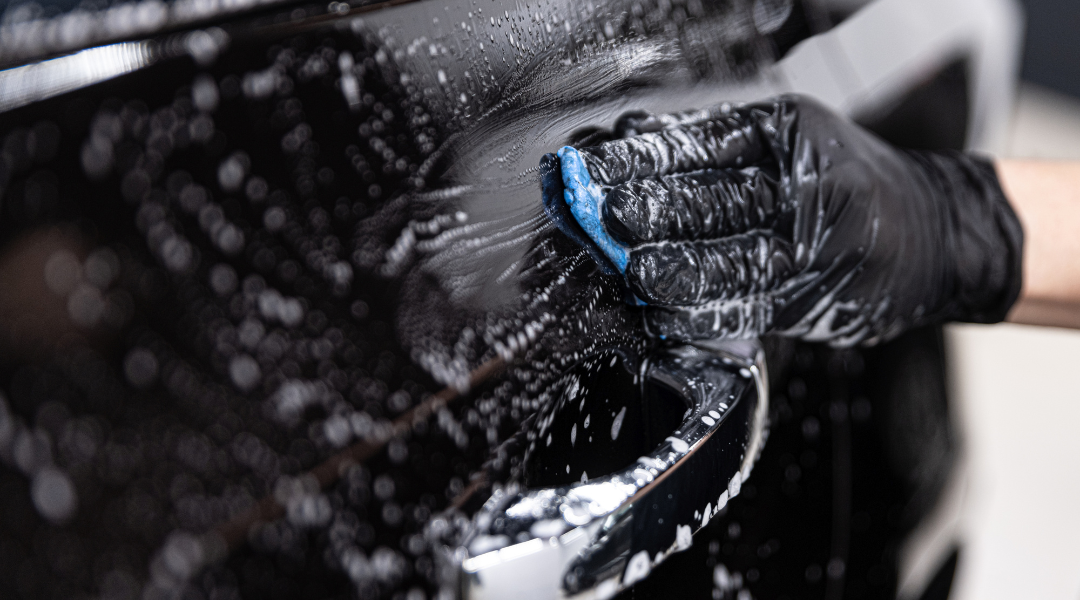
How can you avoid this? To remove the more significant bits, spray the car with a hose or pressure washer. This will help wash the largest abrasives off the surface before you proceed with the detailed washing, reducing the chance of scratching.
Using Too Much Pressure When Cleaning
Washing your car with too much force can cause scratches and swirl marks. This often happens when you scrub too hard with a sponge or use a pressure washer too close to the car’s surface.
How can you avoid this? Treat your car gently with a microfiber wash mitt and keep the pressure washer nozzle safe from the bodywork. The cleaning chemicals should do most of the work by loosening dirt and grime, so you only need to apply minimal effort. This approach helps protect your car’s paint and ensures a thorough clean without causing damage.
Washing in Direct Sunlight:
If you wash your car in direct sunlight, the cleaning products will barely get a chance to dry before rinsing off, leaving streaks and water spots on your vehicle. The sun warms the water you use to rinse off the cleaning products, evaporating the water and the cleaning solutions faster than you can wash your car.
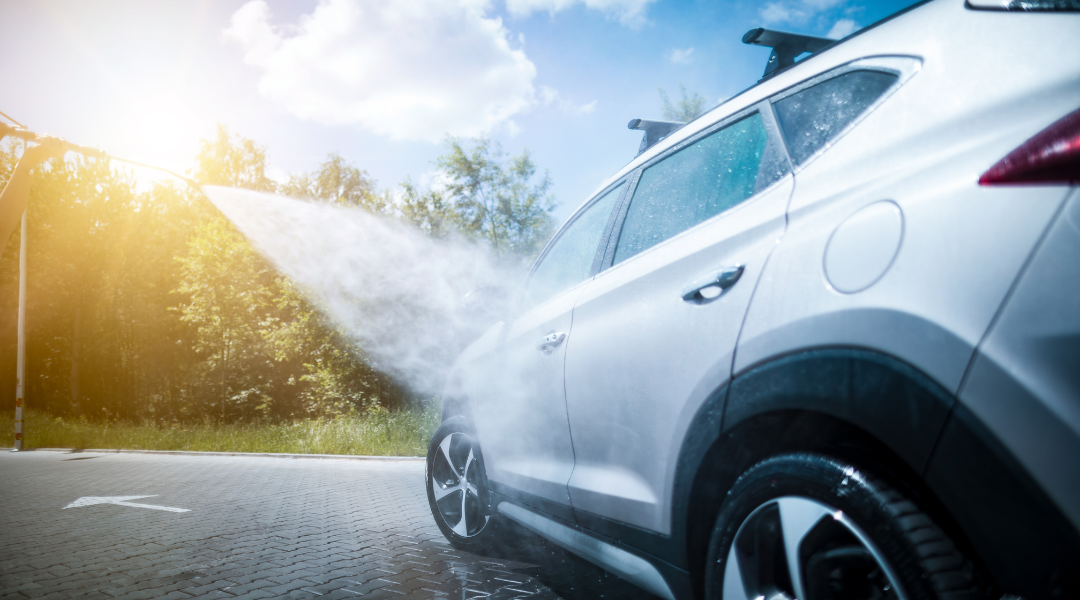
How to avoid this? Wash your car in the shade or when it is coolest – early morning or late afternoon. If you wash during the day, do it in smaller sections and rinse often to keep the surfaces wet and reduce streaking.
Using Dish Soap Instead of Car Wash Soap
Dish soap is good at cutting through grease, which is what it’ll do to automotive paint. It will remove wax and leave the paint bare.
How can you avoid this? Use a car wash soap formulated for automotive finishes. These soaps are gentle on your car’s finish and won’t strip the protective wax. They are still excellent at removing dirt and grime while leaving that protective wax layer in place to extend the life of your shine.
Not Rinsing Properly Before Washing:
Failing to rinse your car thoroughly can result in dirt and debris scratching the paint during the wash.
How to avoid this? Always begin by pre-rinsing off as much loose dirt and grit as possible. When washing your car, you want to start with a rinsed car so all surface dirt has been washed away by a hose or pressure washer before touching the vehicle with your wash mitt or sponge. This pre-rinse helps to minimize any potential scratching and ensures that the surface is ready for cleanser.
Using Circular Motions While Washing:
Washing with circular motions causes swirl marks in your car’s paint, which are more visible and harder to remove.
How can you avoid this? First, wash your car in straight lines, down or up the side of the vehicle, depending on your preference. This minimizes the chance of swirl marks becoming visible. Second, use a clean, good-quality microfibre wash mitt to lower the risk of paint damage.
Skipping the Clay Bar Treatment
A neglected clay bar treatment can leave your vehicle’s paint with tree sap, industrial fallout, and road tar, eventually damaging the paint and finish.
How to avoid this? After washing the car and before waxing, rub down the vehicle with a clay bar to remove these embedded contaminants. Make sure you use a clay bar lubricant and don’t scratch the paint with the clay bar. Now, the surface is level and ready for waxing and polishing.
Using Ammonia-Based Glass Cleaners:
Ammonia-based glass cleaners work against your car’s tinted windows and interiors, causing the tint to peel or discolor and damaging plastic and vinyl surfaces.
How to avoid this? Look for an ammonia-free glass cleaner that is safe for automotive use. These cleaners are designed to remove dirt and streaks without harming the tint or other interior materials and help keep your car’s glass clear and undamaged.
Neglecting the Wheels and Wheel Wells
Brake dust, road dirt, and other types of contamination adhere to wheels and wheel wells and, if allowed to accumulate, can cause corrosion that damages the vehicle.

How to avoid this? Use a detailing brush and a dedicated wheel cleaner to clean your wheels and wheel wells thoroughly. Frequent cleaning of these parts prevents build-up and keeps them looking fresh. Be attentive to the brake dust, which can be particularly corrosive.
Using One Bucket for Washing and Rinsing
When you use one bucket for washing and rinsing, there is a greater chance that some dirt will be transferred back onto your car, creating scratches.
How to avoid this? Use the two-bucket method, one bucket for the soapy wash water and the other for rinsing your wash mitt, to prevent contamination and keep your soapy water cleaner for a better wash. If you have one available, a grit guard in each bucket can help keep dirt out of the water and stop it from being reintroduced to the car.
Not Drying the Car Properly
The paint can be easily damaged by streaks and water spots that result from incorrect drying.
How to avoid this? Blot the water away with a soft, dry microfibre towel. Blotting helps absorb water away from your finish, but rubbing can scratch it, so avoid that at all costs. Or use a leaf blower to blow the water out of the gaps and crevices and ensure the car dries completely clear. This is the key to a showroom-quality, protected paint job.
Ignoring the Engine Bay
If the engine bay is not cleaned, dirt and grime will accumulate, affecting the engine’s performance and overall appearance.
How to avoid this? Keep your engine bay clean by using a degreaser and soft brushes occasionally. Don’t use high-pressure water—it can destroy sensitive components. Instead, wash it with low-pressure water or wipe it down with a damp cloth.
Failing to Use UV Protectants on Interior Surfaces
Internal surfaces, especially those exposed to daylight, will fade, crack, and crumbly unless protected.
How can you avoid this? Use UV protectants on your dashboard, seats, and other interior components. These protectants guard your interior against the sun’s harmful rays and help keep it looking fresh and new without the premature aging, fading, and cracking that comes from exposure to the sun.
Conclusion
You must avoid these common car detailing mistakes to keep your car looking shiny and young. Having your vehicle detailed regularly and properly is imperative, as it helps keep your car in great condition and avoid potential damage.
You can always keep your car clean if you use the right products and methods and maintain the parts.
Follow these tips, and you’ll be the proud owner of a car that runs and looks like a new model. With regular care and attention, your vehicle will stay in good shape and perform at its best for miles to come.
